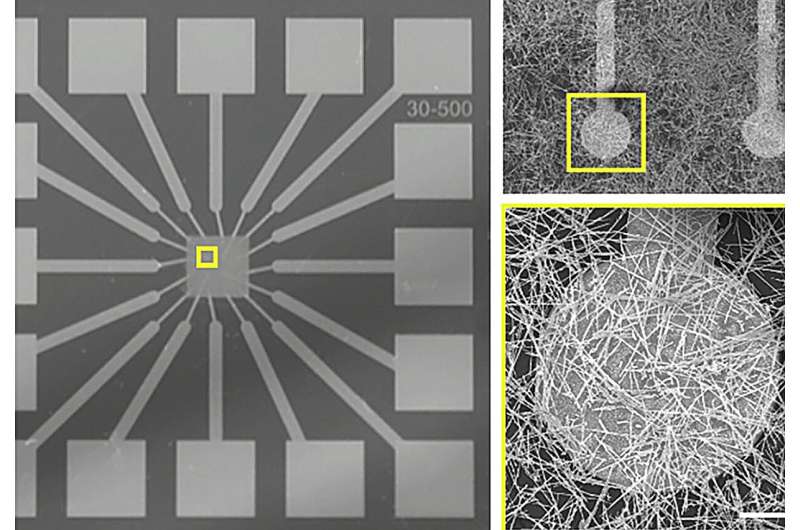This article has been reviewed according to Science X's editorial process and policies. Editors have highlighted the following attributes while ensuring the content's credibility:
fact-checked
peer-reviewed publication
trusted source
proofread
Experimental brain-like computing system more accurate with custom algorithm

An experimental computing system physically modeled after the biological brain has "learned" to identify handwritten numbers with an overall accuracy of 93.4%. The key innovation in the experiment was a new training algorithm that gave the system continuous information about its success at the task in real time while it learned. The study was published in Nature Communications.
The algorithm outperformed a conventional machine-learning approach in which training was performed after a batch of data had been processed, producing 91.4% accuracy. The researchers also showed that memory of past inputs stored in the system itself enhanced learning. In contrast, other computing approaches store memory within software or hardware separate from a device's processor.
For 15 years, researchers at the California NanoSystems Institute at UCLA, or CNSI, have been developing a new platform technology for computation. The technology is a brain-inspired system composed of a tangled-up network of wires containing silver, laid on a bed of electrodes. The system receives input and produces output via pulses of electricity. The individual wires are so small that their diameter is measured on the nanoscale, in billionths of a meter.
The "tiny silver brains" are very different from today's computers, which contain separate memory and processing modules made from atoms whose positions do not change as electrons flow through them. In contrast, the nanowire network physically reconfigures in response to stimulus, with memory based on its atomic structure and spread throughout the system. Where wires overlap, connections can form or break—analogous to the behavior of synapses in the biological brain where neurons communicate with one another.
Collaborators in the research, at the University of Sydney, developed a streamlined algorithm for providing input and interpreting output. The algorithm is customized to exploit the system's brain-like ability to change dynamically and to process multiple streams of data simultaneously.
The brain-like system was made up of a material containing silver and selenium, which was allowed to self-organize into a network of entangled nanowires on top of an array of 16 electrodes.
Scientists trained and tested the nanowire network using images of handwritten numbers, a dataset created by the National Institute of Standards and Technology and often used for benchmarking machine-learning systems. Images were communicated to the system pixel-by-pixel using pulses of electricity each lasting one-thousandth of a second, with differing voltages representing light or dark pixels.
Still in development, the nanowire network is expected to require far less power than silicon-based artificial intelligence systems to perform similar tasks. The network also shows promise at tasks that current AI struggles to accomplish: making sense of complex data, such as patterns in weather, traffic and other systems that change over time. To do so, today's AI requires tremendous amounts of training data and extremely high energy expenditures.
With the type of co-design used in this study—hardware and software developed in tandem—nanowire networks may ultimately serve a complementary role alongside silicon-based electronic devices. Brain-like memory and processing embedded in physical systems capable of continuous adapting and learning may be particularly well-suited to so-called "edge computing," which processes complex data on the spot without requiring communication with far-off servers.
Potential uses include robotics, autonomous navigation in machines such as vehicles and drones, and the smart device technology that makes up the Internet of Things, as well as health monitoring and coordinating measurements from sensors in multiple locations.
More information: Ruomin Zhu et al, Online dynamical learning and sequence memory with neuromorphic nanowire networks, Nature Communications (2023). DOI: 10.1038/s41467-023-42470-5



















